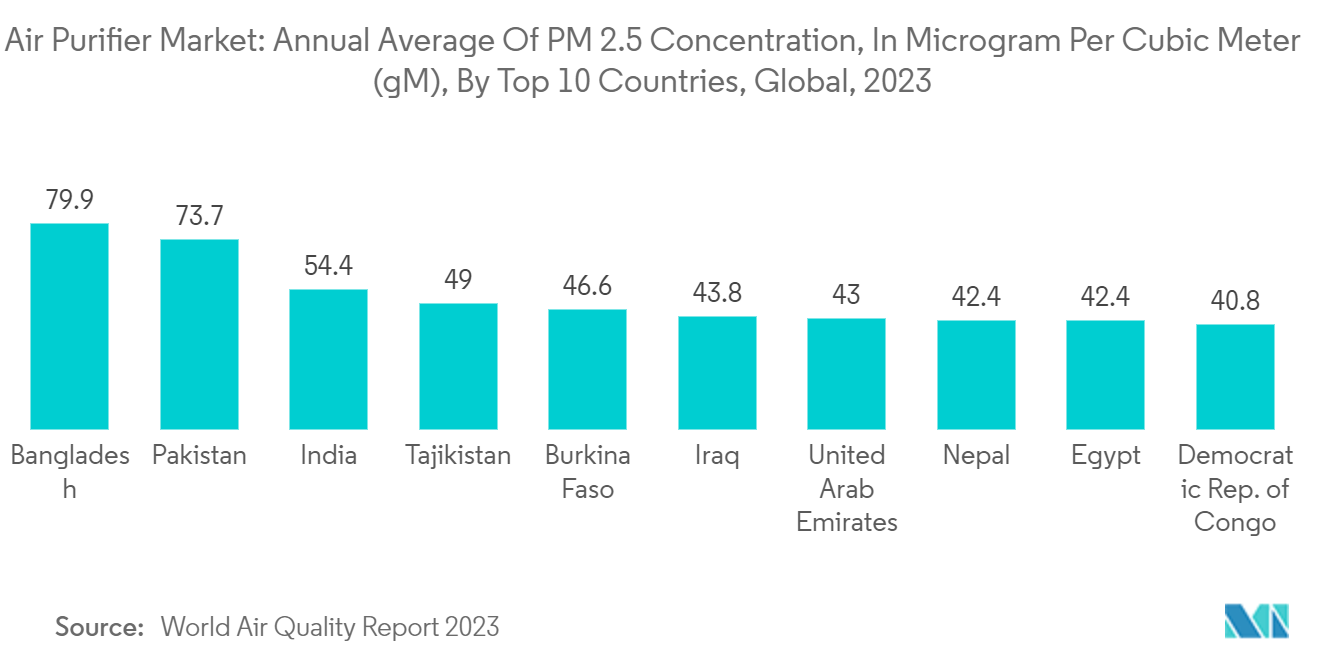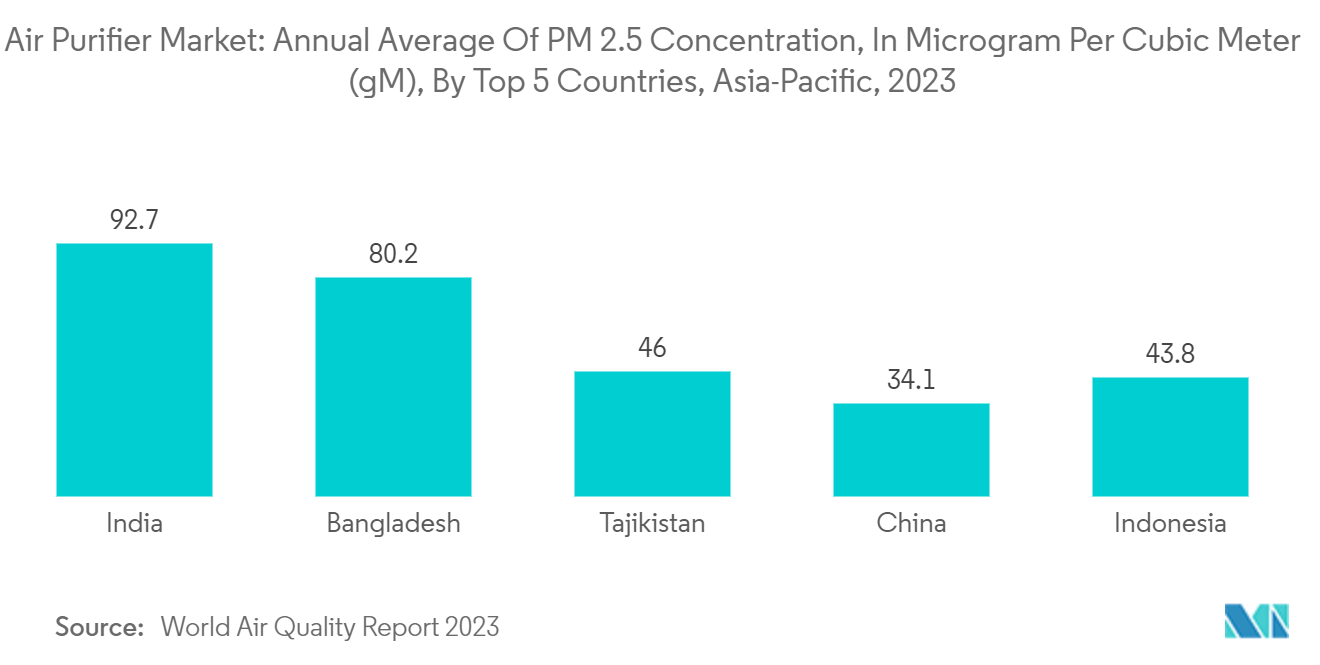Market Trends of Air Purifier Industry
The High-efficiency Particulate Air (HEPA) Segment is Expected to Dominate the Market
- Mechanical air filters, such as HEPA filters, remove particles by capturing them on filter materials. They capture large airborne particles, such as dust, pollen, mold spores, animal dander, and particles containing dust mite and cockroach allergens.
- HEPA filters are a type of extended-surface filter with a larger surface area and higher efficiencies for removing larger and smaller airborne particles. Moreover, these air filters remove respirable particles more efficiently than pleated filters. The two most common standards required for HEPA air purifiers include the capability to remove particles, i.e., 99.95% (European Standard) or 99.97% (ASME Standard), which have a size greater than or equal to 0.3 micrometers.
- For the last decade, HEPA filters have been proven to control the spread of airborne particles and organisms, such as viruses and bacteria, across various healthcare facilities and life sciences applications. Many professional engineering organizations recommend HEPA filters in hospitals, infection control clinics, and other healthcare facilities to eliminate microbes and other dangerous particles.
- Further, pollution levels around the globe have increased dramatically in recent years. Hence, companies operating in the industry have focused on developing and introducing innovative products.
- For instance, in October 2023, the air purifier manufacturing company ISO-Aire launched its new HEPA purifier variant called RSF500. The model delivers 500 cubic feet per minute and is feasible for small to medium-sized offices. It also offers three levels of air filtration protection to eliminate harmful pollutants and airborne germs. Such HEPA air purifier variants are likely to get traction in the future.
- As per the World Air Quality Report, the highest concentration of particulate matter (PM) 2.5 in 2023 was noted in Bangladesh at 79.9 micrograms per cubic meter (µg/m³), followed by Pakistan at 73.7 µg/m³, 54.4 at µg/m³, Tajikistan at 49 µg/m³ and Burkina Faso at 46.6 µg/m³.
- Therefore, owing to such factors, high-efficiency particulate air (HEPA) technology is expected to dominate the market during the forecast period.

Asia-Pacific is Expected to Dominate the Market
- Asia-Pacific has been a catalyst for demand in the air purifier market. In developing nations such as India, Bangladesh, Tajikistan, Indonesia, Vietnam, and China, industrial growth is at its peak owing to increased industrialization activities and population growth. This is expected to drive demand during the forecast period.
- As per the World Air Quality Report, the highest average PM 2.5 concentration in India stood at 92.7 µg/m³, Bangladesh at 80.2 µg/m³, Tajikistan at 46 at µg/m³, China at 34.1 µg/m³, and Indonesia at 43.8 µg/m³.
- On the other hand, in India, the market for air purifiers is mainly confined to metropolises. However, it is expected to grow during the forecast period. In November 2023, Nirvana rolled out India's first-ever Micro-electrostatic precipitator (MESP) technology-based air sterilizing purifier. The MESP technology is deemed to perform best in Indian atmospheric conditions and protect against PM 2.5, dust, smoke, viruses, bacteria, and pollen.
- The air purifier market in Vietnam is expanding rapidly, mainly due to surging demand as consumers become more concerned about fine dust. In February 2024, the air purifier company Levoit launched a new one called Levoit Core 200S for residential and commercial use. Levoit Core 200S has a 3-layer filter with an essential Nylon core, an H13 True HEPA core, and an inner activated carbon core. It filters up to 99.97% of airborne particles with a size of 0.3 microns. Such products are likely to protect people from harmful emission levels in Vietnam.
- Therefore, such factors are expected to make Asia-Pacific the dominant air purifier market during the forecast period.


